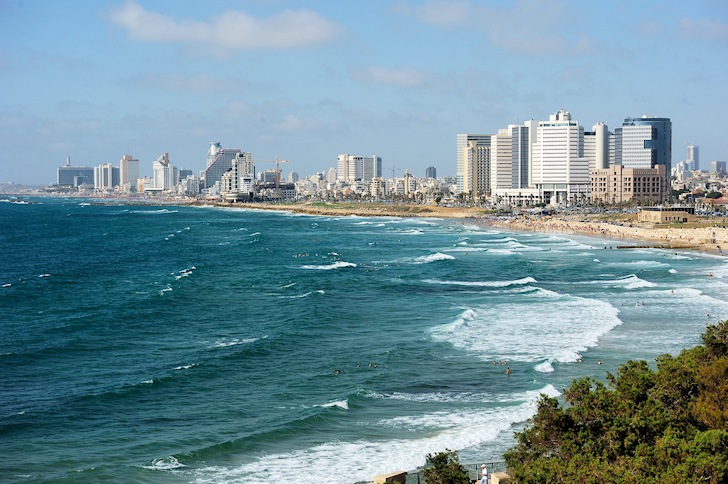Located in West Asia, the State of Israel is bordered by Lebanon, Syria, Jordan, the West Bank, Egypt, the Gulf of Aqaba, the Gaza Strip, and the Mediterranean Sea.
The world's only Jewish state has a total land area of 20,330 square kilometers.
The coastline is 273 kilometers long, most of which corresponds to the Mediterranean coastal plain, where the largest part of the population is settled.
The prevailing climate in Israel is the Mediterranean, mainly in the northern and coastal regions, with long, hot, and dry summers, between May and September and short, cool, and rainy winters from October to April.
The southern and eastern regions of the country, on the other hand, are under the influence of an arid climate.
Rain is more prevalent in the northern and central areas.
Some mountain regions receive snow at least once a year, while in other parts of the country, it is rarely seen.
The average temperatures range between 12 ºC in January and 30 ºC in August.
Israel is located at the point of convergence of four different climatic systems, which leads to unpredictable variations of the prevailing winds.
The country is very much protected from the long-distance swells.
Therefore, only wind swell will create waves for surfing in Israel.
During summer, two-foot rides will be possible with northern winds, while southwest winds will produce up to five-foot walls.
Hilton Beach, in Tel Aviv, is probably the best surf spot in Israel. Two local jetties protect the break against unwanted currents.
Maravi Beach and Dolphinarium Beach are also alternative peaks in Tel Aviv. To the north, you'll find Zvulun and Dabush in Herzliya.
If you continue driving north, stop in Netanya to check the wave conditions in three beach breaks: Kontiki, Sironit, and Beit Yannai.
A few minutes away is Caesaria. Here, look for Shonit, Sdot Yam, and Arubot Beach.
Farther north, in Haifa, Bat Galim Beach offers two peaks. Backdoor (Israel's best reef break) and Casino (a longboarding wave).
